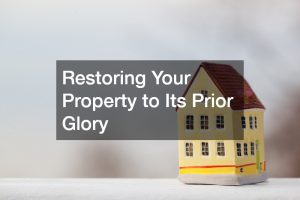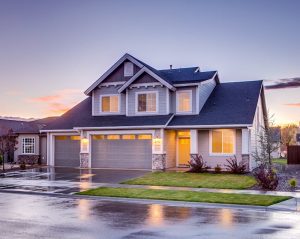The Deveraux House in 334 W. South Temple in Salt Lake City earns the distinction of the oldest home in Utah. Built in the 1850s, it used to serve Joseph Angell Young, the son of Brigham Young.
The Victorian property also welcomed visitors like William Seward, the time’s Secretary of War, and General William Tecumseh Sherman. It also passed through many hands from its original owner, William Staines, to the state and, finally, the Latter-Day Saints, which now used it as an occasional venue for social events.
Through it all, it stood majestic and charming because it was properly maintained. It is the perfect testament to the claim that a house can be an excellent heirloom and even a historical piece as long the owners make an effort to upkeep it.
But then, what kinds of maintenance homeowners should never forget? Here are four of them:
1. Roofing and Gutter
Depending on the type of roof, they can last between 20 and 50 years. Slate shingles may remain useful for a whopping 125 years. However, many factors can also cause them to decay regardless of their make.
In Utah, roofs and gutters are prone to ice dams. During winter, heavy snow can accumulate on the surface and settle on the edges.
Considering snow is still made of water, it can increase the level of moisture that can weaken the roofing material. It will then potentially lead to leaking.
The matter can get worse once the temperature rises and the season turns to spring. Snow then melts, but the amount of water on the roof may be significant. The remaining ice on the edges may prevent them from flowing into the gutter, so it can end up in the holes and walls of the house.
Homeowners can schedule an inspection of the roof and gutter at least once a year, preferably right after or before winter.
2. Paving
Many homes in Utah use asphalt for their paved roads and pathways since it is economical. It can also be durable except it is not exempted from the harmful effects of black ice.
Also known as clear ice, black ice is another possible outcome during Utah’s winter. Snow and sometimes dew and water runoffs can create a thin invisible layer on the surface of the asphalt as the temperature drops.
Because of this, roads become trickier and more dangerous to traverse. They become 100% slippery—with even less traction than snowy ground—while black ice requires keen attention to detail for a person to spot.
To be safe, homeowners need to assume that, in winter, the roads are more likely covered with black ice. This is especially true when they appear glossy or smooth.
They can then call on experts in black ice removal and asphalt repair. Otherwise, the wetness can only make the roads uneven, further increasing the risks of accidents.

3. Trees
Beyond landscaping, property owners in Utah need to check tree growth, making sure they are not encroaching on other people’s fences or houses. Else, neighbors can raise a dispute and demand that you cut the tree.
Homeowners should also monitor the root growth. Sometimes they can penetrate the ground and into the water lines. While the trees grow beautifully, the plumbing lines can become clogged and eventually burst. That’s a lot of costly mess to deal with.
4. HVAC Systems
A person who owns an old home in Utah needs to check the insulation. More likely, it is still using asbestos.
Unlike in other countries, this material, which is a major risk factor for a rare type of cancer, isn’t entirely banned in the United States. Instead, it is subject to state and federal regulations. A homeowner can call a company that specializes in asbestos removal since the material is delicate.
Moreover, property owners may have to check on the furnace and heater. When they are improperly installed, they may release a harmful gas known as carbon monoxide that causes poisoning. The most severe cases can lead to permanent brain damage or even death.
Before the temperature peaks, homeowners then have to ensure their air-conditioning units are working properly. Defective ones can increase utility spending.
Unlike land, a home can depreciate when not properly taken care of. Homeowners may not be able to maximize the property’s market value should they decide to sell it. They also cannot expect to pass this on to their future generation. Fortunately, the remedy is also simple: be consistent with its upkeep.











